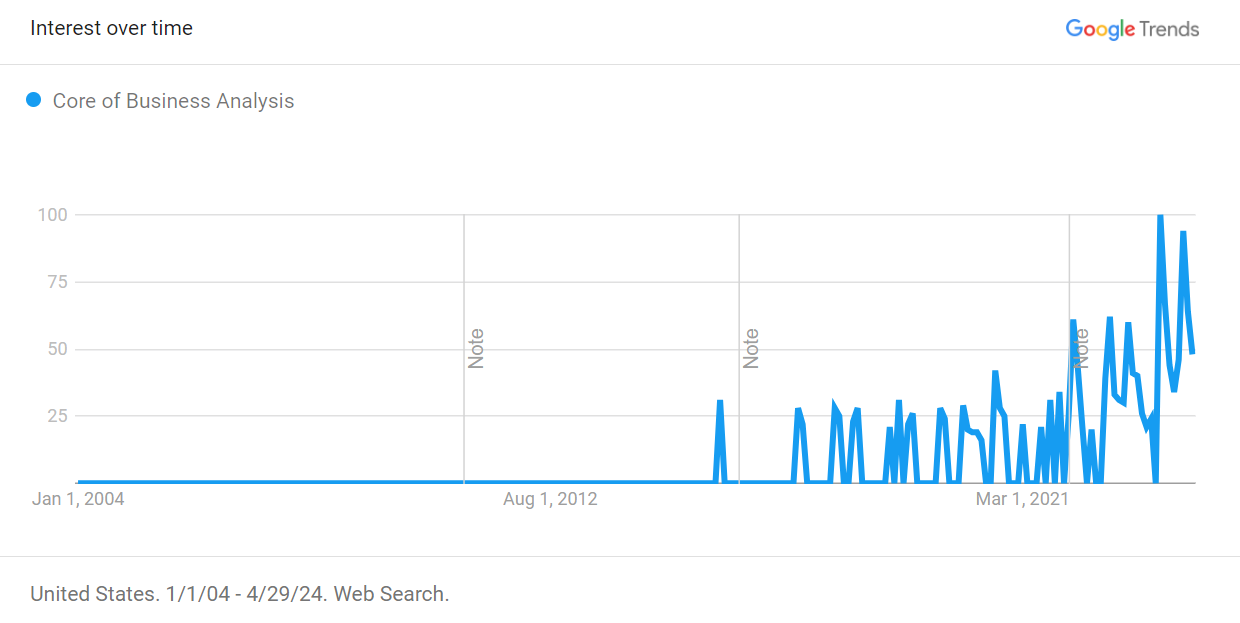Business analysis is a vital process in understanding and improving business operations. It involves examining the structure and functions of an organization to identify its needs and recommend solutions to achieve its goals effectively.
The core of business analysis consists of several key components that are essential for ensuring successful outcomes.
Understanding Business Needs

The first step in business analysis is understanding the current state of the business and its future aspirations.
This involves assessing the organization’s strengths, weaknesses, opportunities, and threats.
By conducting a thorough analysis, analysts can identify problems and opportunities within the organization.
Assessing Current State
- Reviewing Business Processes: Analysts examine the existing workflows, procedures, and systems within the organization to understand how things currently operate.
- Analyzing Organizational Structure: Understanding the hierarchy, roles, and responsibilities within the organization provides insight into how information flows and decisions are made.
- Assessing Technology Infrastructure: Evaluating the organization’s technology infrastructure helps identify any limitations or opportunities for improvement in supporting business operations.
Find Out More: What is the First Step in Analyzing a Business Process?
Identifying Problems and Opportunities
- SWOT Analysis: Conducting a SWOT (Strengths, Weaknesses, Opportunities, Threats) analysis helps identify internal strengths and weaknesses as well as external opportunities and threats.
- Market Analysis: Analyzing market trends, competition, and customer feedback provides insights into potential opportunities for growth and areas where the organization may be falling behind.
- Financial Analysis: Reviewing financial statements helps identify areas where costs can be reduced, revenue increased, or investments optimized.
Conducting Gap Analysis
- Comparing with Industry Standards: Benchmarking the organization’s performance against industry standards helps identify areas where it lags behind or where it excels.
- Customer Feedback and Satisfaction: Understanding customer needs and satisfaction levels can reveal gaps between what the organization offers and what customers expect.
- Employee Feedback and Engagement: Soliciting feedback from employees about their experiences and challenges can uncover internal issues that need to be addressed.
Environmental Analysis
- Regulatory Compliance: Ensuring compliance with industry regulations and standards is essential for avoiding legal issues and maintaining reputation.
- Economic Factors: Assessing economic conditions and trends helps anticipate changes that may impact the organization’s operations.
- Technological Trends: Keeping abreast of technological advancements and innovations helps identify opportunities for leveraging technology to improve business processes.
Cultural and Organizational Factors
- Corporate Culture Assessment: Understanding the organization’s culture and values is crucial for proposing changes that align with its ethos.
- Change Readiness: Assessing the organization’s readiness and capacity for change helps anticipate potential challenges and plan mitigation strategies.
- Risk Analysis: Identifying potential risks and their impact on the organization helps prioritize areas of focus and develop risk mitigation plans.
Core Concepts of Business Analysis
The BACCM model, which stands for Business Analysis Core Concept Model, is a framework developed by the International Institute of Business Analysis (IIBA) to define the core concepts and activities of business analysis.
It comprises six key elements: Change, Need, Solution, Stakeholder, Value, and Context.
Change
Change is at the heart of business analysis. It encompasses the transformations that organizations undergo to improve their performance, adapt to market conditions, or achieve strategic objectives.
- Environmental Changes: Identifying external factors such as market trends, regulatory requirements, and technological advancements that drive change.
- Organizational Changes: Understanding internal factors such as restructuring, mergers, or process optimization initiatives that necessitate change.
- Adaptation and Innovation: Assessing the organization’s ability to adapt to change and innovate to stay competitive in the market.
Need
Need refers to the gap between the current state of the organization and its desired future state. It encompasses the problems to be solved, opportunities to be leveraged, and objectives to be achieved.
- Problem Identification: Identifying issues, challenges, or inefficiencies within the organization that require attention.
- Opportunity Recognition: Recognizing areas where improvements can be made to enhance efficiency, reduce costs, or capitalize on emerging trends.
- Objective Setting: Defining clear and measurable goals that align with the organization’s strategic direction.
Solution
Solution represents the set of actions or changes proposed to address the identified needs and achieve the desired outcomes.
- Options Analysis: Evaluating different approaches, strategies, or technologies to determine the best solution.
- Requirements Definition: Identifying and documenting the functional and non-functional requirements that the solution must meet.
- Design and Implementation: Developing a detailed plan for implementing the chosen solution, including design specifications, timelines, and resource requirements.
Stakeholder
Stakeholder refers to anyone who is affected by the outcomes of the business analysis process or has a vested interest in its success.
- Identification: Identifying all individuals, groups, or organizations that have a stake in the project or initiative.
- Analysis: Assessing stakeholders’ interests, needs, expectations, and influence on the project.
- Engagement and Communication: Engaging with stakeholders throughout the process to gather input, manage expectations, and ensure buy-in.
Value
Value represents the benefits that the organization expects to achieve by implementing the proposed solution.
- Business Value: Identifying tangible and intangible benefits that the solution will deliver, such as increased revenue, cost savings, or improved customer satisfaction.
- Value Proposition: Communicating the value of the solution to stakeholders and ensuring that it aligns with their expectations.
- Value Realization: Monitoring and measuring the actual value delivered by the solution and making adjustments as needed to maximize benefits.
Context
Context provides the background information and situational awareness necessary to understand the broader context in which the business analysis is conducted.
- Organizational Context: Understanding the organization’s structure, culture, goals, and constraints.
- Industry and Market Context: Analyzing market trends, competitive landscape, and regulatory environment.
- External Influences: Considering factors such as economic conditions, technological advancements, and geopolitical events that may impact the project.
Defining Scope and Objectives
After understanding the organization’s needs, the next step is to define the scope and objectives of the analysis. This involves setting boundaries for the analysis and clarifying what the organization hopes to achieve.
Setting Boundaries
Defining the scope helps ensure that the analysis remains focused and manageable. This includes determining which areas of the organization will be included in the analysis and which will be excluded.
Clarifying Goals and Objectives
Setting clear goals and objectives is essential for guiding the analysis process. This helps ensure that the analysis stays on track and that the solutions proposed align with the organization’s strategic objectives.
Ensuring Alignment with Business Strategy
It’s crucial to ensure that the objectives of the analysis align with the overall business strategy. This helps ensure that the proposed solutions support the organization’s long-term goals.
Analyzing Stakeholders
Stakeholders play a crucial role in the success of any business analysis initiative. Analysts need to identify and engage with stakeholders to ensure that their needs and concerns are addressed.
Identifying Key Stakeholders
Stakeholders include anyone who is affected by the outcome of the analysis. This may include senior management, employees, customers, suppliers, and regulatory bodies.
Understanding Their Interests and Influence
Analysts need to understand the interests and influence of each stakeholder to effectively manage their expectations. This involves identifying their concerns, motivations, and potential barriers to change.
Managing Stakeholder Expectations
Effective communication is key to managing stakeholder expectations. Analysts need to keep stakeholders informed about the progress of the analysis and involve them in decision-making processes.
Identifying Requirements
Once the needs of the organization and stakeholders are understood, the next step is to identify the requirements for the proposed solution.
Eliciting Requirements
- Interviews and Workshops: Engaging with stakeholders through interviews and workshops allows analysts to gather firsthand information about their needs and expectations.
- Surveys and Questionnaires: Collecting feedback through surveys and questionnaires helps reach a larger audience and gather diverse perspectives.
- Observation: Observing users and processes in action provides insights into how things currently work and what improvements are needed.
Documenting Requirements
- Requirement Specifications: Documenting requirements in detailed specifications helps ensure clarity and alignment among stakeholders.
- Use Cases: Describing how users interact with the system through use cases helps understand functional requirements.
- User Stories: Breaking down requirements into user stories helps prioritize them and focus on delivering value incrementally.
Prioritizing Requirements
- MoSCoW Method: Using the MoSCoW (Must have, Should have, Could have, Won’t have) method helps prioritize requirements based on their importance.
- Kano Model: Assessing requirements using the Kano model helps distinguish between basic requirements and features that provide delight.
- Cost-Benefit Analysis: Evaluating the cost and benefits of implementing each requirement helps prioritize them based on their return on investment.
Validation and Verification
- Prototyping: Creating prototypes allows stakeholders to visualize the solution and provide feedback early in the process.
- Peer Reviews: Having requirements reviewed by peers helps identify any inconsistencies or missing details.
- Traceability Matrix: Creating a traceability matrix helps ensure that each requirement is linked to a business need and that no requirement is overlooked.
Iterative Refinement
- Feedback Loops: Incorporating feedback from stakeholders throughout the process allows for continuous refinement of requirements.
- Change Control Process: Implementing a change control process helps manage changes to requirements and ensures that they are properly evaluated before implementation.
- Version Control: Maintaining version control of requirements documents helps track changes and ensures that everyone is working with the latest information.
Solution Assessment and Validation
Once requirements have been identified, analysts evaluate potential solutions to address the organization’s needs.
Evaluating Potential Solutions
Analysts assess the feasibility of different solutions based on factors such as cost, time, and resource requirements. This may involve conducting cost-benefit analyses or feasibility studies.
Testing and Validating Solutions
Before implementing a solution, it needs to be tested to ensure that it meets the organization’s requirements. This may involve conducting user acceptance testing or piloting the solution in a limited setting.
Ensuring the Solution Meets Business Needs
Finally, analysts ensure that the selected solution meets the organization’s needs and delivers the expected benefits. This may involve monitoring key performance indicators and making adjustments as needed.
FAQs
- Why is business analysis important?
Business analysis helps organizations identify problems, opportunities, and solutions to improve their operations and achieve their goals. - What skills are required for a business analyst?
Business analysts need a combination of technical, analytical, and interpersonal skills, including communication, problem-solving, and critical thinking.
- How can I become a business analyst?
To become a business analyst, you can pursue a degree in business, information technology, or a related field, and gain experience through internships or entry-level positions.
- What tools do business analysts use?
Business analysts use a variety of tools, including Microsoft Excel, Visio, and project management software, as well as specialized tools for requirements management and data analysis.
- How does business analysis contribute to project success?
Business analysis ensures that projects are aligned with business objectives, stakeholders’ needs are addressed, and solutions are delivered that meet the organization’s requirements and expectations.




